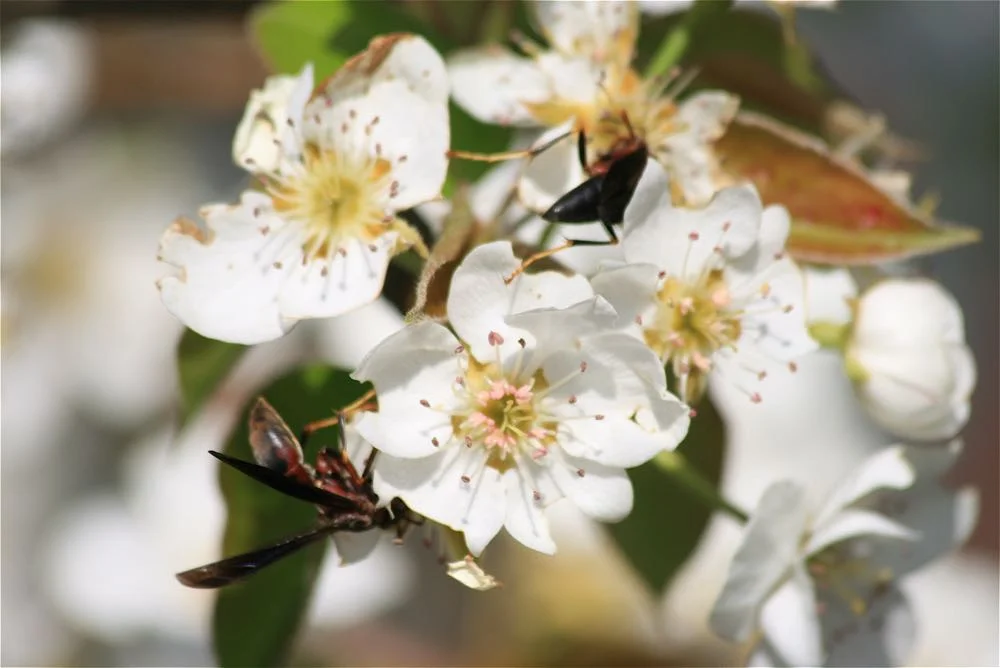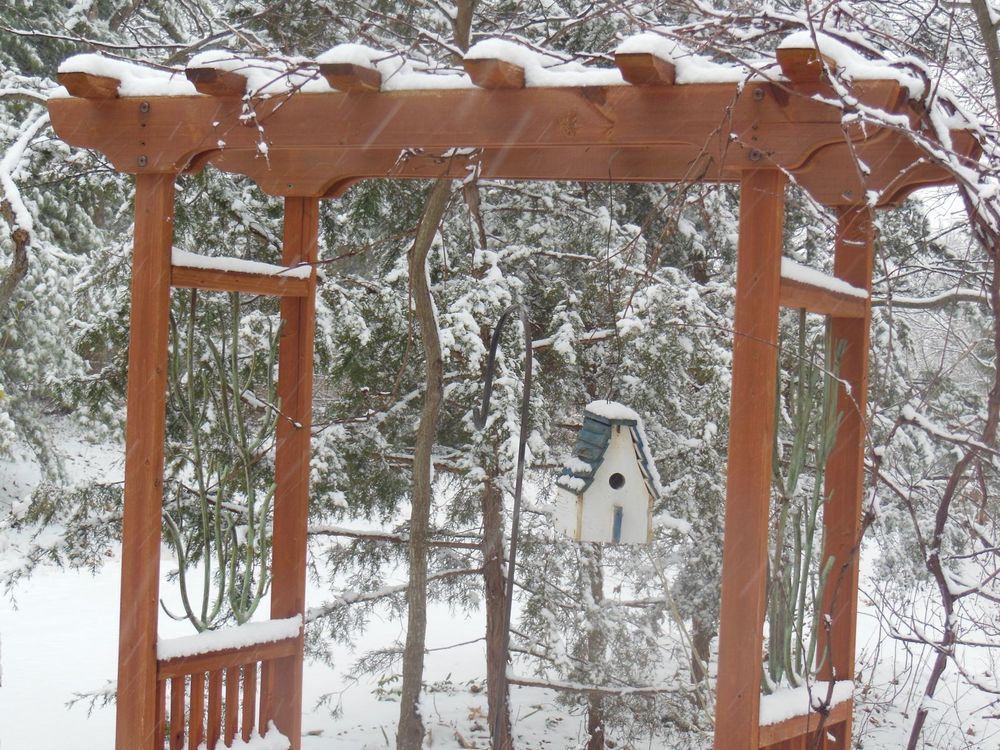Blooming Semi-Dwarf Pear Tree
/The first blooms on my semi-dwarf Bartlett pear tree enticing my honeybees.
Blooming Semi-Dwarf Pear Tree
I almost cringed at the news, the forecaster called for temperatures to dip into the low 20s and snow.
It's been a record mild winter in Missouri this year, with spring a good 3 weeks earlier than previous years. Besides bees setting up house almost a month early, my compact dwarf fruit trees are also blooming early, not a good development when winter has not finished with us yet.
The biggest impact will be on my semi-dwarf Bartlett pear tree, planted next to my driveway in 1984. This tree had not produced fruit for so long I had actually forgotten I had planted it there until 30 years later when in 2010, I finally saw it in bloom.
What a sight. At first I thought it was snow. That's what one gets from looking out the window without glasses on. On closer inspection, and finding one's glasses, I realized my pear tree had finally found it's bloom.
Another close up of the clustered semi-dwarf flowering Bartlett pear tree blossoms.
The flowers of Bartlett pears are so pretty, reminiscent of small single roses.
That first year the pear tree bloomed, I had also cleaned out my birdhouses and found an increased number of small wasps nests. As I looked through dozens of pictures I took of the pear tree, I realized the pollination was courtesy of the wasps that had taken up residence in the birdhouses. I haven't looked at wasps the same since.
One of the pictures I took the first year my Bartlett pear tree bloomed thanks to visiting wasps.
We don't think of wasps as pollinators but they part of the family of insects, birds, bats and other insects and animals that form that fascinating family of pollinators. That was the same year I added honeybees to my garden later in the year. They have joined the wasps visiting the Bartlett pear tree in bloom as well.
Every year since, I wander through the flower beds checking out to see how soon my bees find the rest of the flowering compact dwarf fruit trees. I usually find at least one bee beats me to the flowers.
This is a semi-dwarf Bartlett pear tree full of flowers this year, even though its too early.
On this particular cloudy, overcast day, I didn't see any bees among the flowers but I still enjoyed looking at all of the white.
When one has waited 30 years to see a tree in bloom, one doesn't get tired of finally seeing flowers. And one does cringe at the thought that all of these beautiful possible pears will be gone if a freeze hits the area.
My beautifully-blooming Bartlett pear tree next to my driveway.
My other fruit trees are small enough that I can cover them in coats and sheets but this pear tree is too big to protect.
So every morning, I go outside and check to see if the blooms have made it, hoping that this year in spite of the late winter, I will still get pears later. That's excluding the battle with the squirrels.
Well, one battle at a time.
Charlotte

















